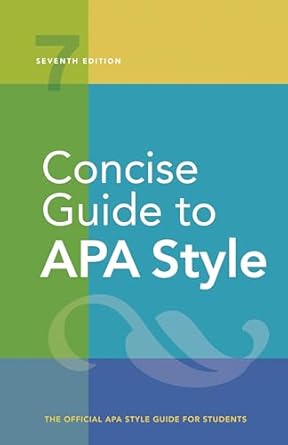[toc]
comma usage guide mastering punctuation rules
Concise Guide to APA Style: 7th Edition (OFFICIAL)
Page 108 Review
Analyzing Punctuation, Lists, and Italics: A Detailed Review
This section of the ebook delves into the nuanced world of punctuation, lists, and italics, providing a comprehensive guide to their proper usage.
The extract focuses primarily on the correct application of commas in various contexts, a crucial element of clear and effective writing.
Let’s break down the key points covered.
Commas in Statistical Reporting
The ebook highlights the use of commas in setting off statistics within text that already contains parentheses.
This is crucial for readability, preventing nested parentheses from becoming confusing.
For instance:
“Sleep amount was not significantly different between the three groups (nap: M = 7.48 hr, SD = 1.99; wake: M = 8.13 hr, SD = 1.22; nap + wake: M = 7.25 hr, SD = 0.76), F(2, 71) = 2.32, p= .11.”
This example clearly demonstrates how commas separate the statistical data for each group (nap, wake, and nap + wake) while maintaining the overall clarity of the sentence.
Similarly, in reporting the main effect of a group:
“There was a main effect of group on corrected recognition, F(2, 71) = 3.38, p< .04, n,* = .087." The comma ensures the reader can easily distinguish the statistical result from the preceding statement.
Commas with Conjunctions and Dates
Another vital usage of commas is to separate two independent clauses joined by a conjunction:
“Facial expressions were presented, and different photo models were chosen randomly.”
The comma before “and” signals the connection between the two clauses without creating a run-on sentence.
The ebook also addresses the correct way to format dates, emphasizing the use of commas:
“Retrieved April 24, 2020, from…”
However, it correctly notes that when only a month and year appear, a comma is not necessary:
“in April 2020”
This attention to detail showcases the ebook’s commitment to providing precise guidelines.
Commas in Citations and Large Numbers
The use of commas in parenthetical in-text citations is also covered:
“(Bergen-Abramoff, 2018)”
“(Horowitz, 2019, discovered . . .) ”
Furthermore, the ebook addresses the use of commas in large numbers:
“to separate groups of three digits in most numbers of 1,000 or more (see Section 6.7 for exceptions)”
This rule contributes to the readability of numerical data, making it easier for readers to grasp the magnitude of the numbers presented.
When to Avoid Commas: Restrictive Clauses and Compound Predicates
The ebook also clarifies when *not* to use commas, particularly before essential or restrictive clauses:
“Adolescents who spent a small amount of time on electronic communication activities were happier than those who spent no time on such activities.”
The clause “who spent a small amount of time on electronic communication activities” is essential to the meaning of the sentence; removing it would significantly alter the intended message.
Therefore, no comma is used.
Similarly, commas should not be used to separate parts of a compound predicate:
“Correct: Participants rated the items and completed a demographic questionnaire.”
“Incorrect: Participants rated the items, and completed a demographic questionnaire.”
The absence of a comma in the correct example maintains the flow of the sentence and avoids unnecessary pauses.
Commas in Measurements
Finally, the ebook briefly touches on commas in measurements:
“7 years 4 months”
“2 min 35s”
“5 ft 10 in.”
While not explicitly stated that commas are *not* used here, the examples demonstrate the omission, aligning with standard formatting conventions.
Conclusion
This section of the ebook provides a valuable and detailed overview of comma usage, covering a wide range of scenarios and exceptions.
By providing clear examples and explanations, it equips readers with the knowledge necessary to use commas correctly and effectively, ultimately enhancing the clarity and professionalism of their writing.
The ebook’s attention to detail and comprehensive coverage make it a useful resource for anyone looking to improve their punctuation skills.
Buy full ebook for only $18: https://www.lulu.com/shop/american-psychological-association/concise-guide-to-apa-style-7th-edition-official/ebook/product-rmzpq54.html?page=1&pageSize=4
Comma Usage Guide Mastering Punctuation Rules
Read more: Student Paper Analysis: Therapy & Research Insights


Leave a Reply